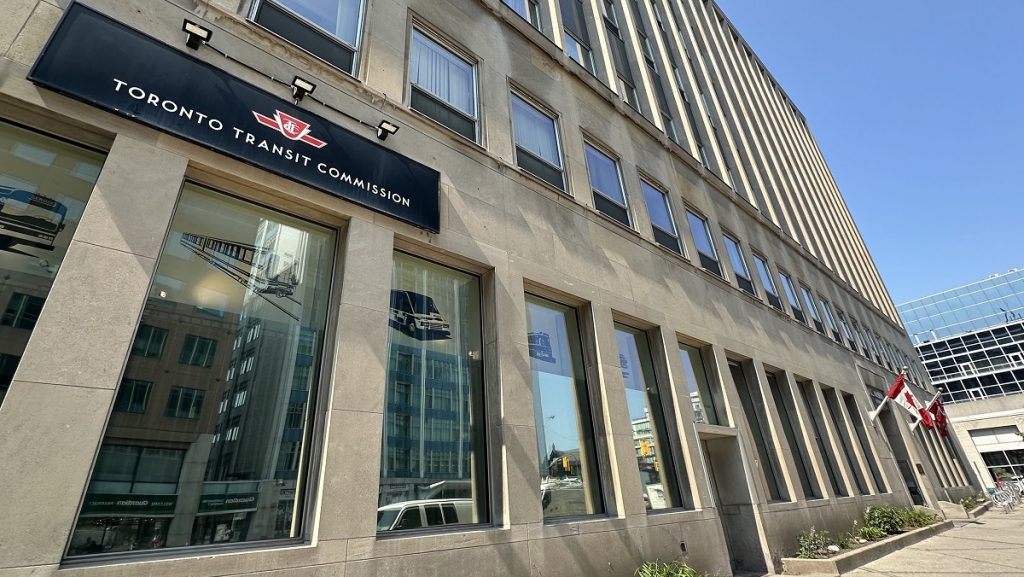‘Transit’ app now providing real-time TTC detour data as part of pilot project

Posted September 5, 2024 5:44 pm.
As Toronto continues to deal with roads bogged down with increasing traffic congestion and construction, a one-year agreement between the TTC and the ‘Transit’ app will see real-time detour information shared with commuters.
For commuters and transit advocates like Shelagh Pizey-Allen who rely on the TTC, sometimes it doesn’t feel like the better way.
“When something goes wrong on the TTC, the only thing you can do is to kind of go over to the Twitter of the TTC and see what they’re saying,” Pizey-Allen, who is the spokesperson for the group TTCriders, said while referencing the X account @TTCnotices.
“People will only choose to take public transit if it’s reliable and they can count on it, and knowing when your bus is supposed to show up and where it’s going to go is a huge part of that.”
Pizey-Allen said she has used different apps to get real-time vehicle information. Citing an experience waiting for a Line 2 Bloor-Danforth subway replacement shuttle bus, she said getting details on detours would be a major help.
“It took like 15 minutes extra for the bus to make this absolutely roundabout detour and if I’d known that was going to happen, I just would have got off, saved 20 minutes and just walked to the next station,” Pizey-Allen said.
Stephen Miller, a spokesperson for the Montreal-based ‘Transit’ app that includes information for transit systems in approximately 500 cities, echoed the sentiment.
“Giving people that reliable experience so they know a) that the bus is going to come and then b) when it’s going to come is the type of thing that will keep them coming back,” he told CityNews.
Miller said approximately 300,000 people open up the app to access TTC-related data. He said the app provides step-by-step navigation for users, even while offline. It’s broken down into two ways: scheduled information and real-time displays with more accurate vehicle arrival countdowns.
The real-time TTC vehicle data provided to all web developers is built into the app and it’s augmented by observations from fellow users. Miller said users can remain anonymous with user names and emojis. He said they can answer questions about vehicle punctuality, cleanliness and other things.
While ‘Transit’ has been around for some time now, Miller said developers have been able to develop an enhanced way of tracking unplanned diversions.
If three or more buses or streetcars go off an approved route, it’ll get flagged as a detour within a couple of minutes, and the revised travel path along with vehicles stopping to let passengers on and off will get added to the app’s map. The segment of the route not being serviced will become a line of dashes with stops crossed out and the detour will show up as a solid line with stops shown as white circles.
“We reroute users so they’re not going to the wrong stop when the busses or streetcars aren’t there,” Miller said.
“The reason we take three buses or three streetcars to determine this is because we really want to make sure we’re giving reliable information … before we share it out with riders.”
Stuart Green, a TTC spokesperson, said staff have signed a one-year agreement with ‘Transit’ to have all the data the app is generating fed right onto the TTC.ca website so it’s accessible to non-users. He said it’s expected to show up on the TTC’s website in a few weeks.
“There’s a cost of their proprietary information that they’re providing, which is why we’re doing it on a pilot to start out with. We then have to go out to the market for an open tender if we want to sort of expand it beyond that,” he said.
Green said TTC staff deal with unexpected situations every day, such as vehicle collisions, emergency situations and construction, that make it difficult to convey to all riders.
“We can’t always foresee those things and one of the things that we hear from our customers quite often is we want more information in real-time, so of course we have website updates, we have Twitter updates, we have all of those updates available. This is another one of those updates,” he said.
“This is really about investing in a better customer experience, making sure that people have the best journey that they possibly can when there are those unplanned interruptions in service that are simply beyond our control.”
Meanwhile, Pizey-Allen called these enhancements “good news.” She said she’d like to see this type of data available to all apps.
Pizey-Allen also said she hopes real-time subway data can be better reflected online, especially as the network continues to see restricted speed zones due to maintenance.
A review of the ‘Transit’ app on Thursday showed limited information contributed almost exclusively by users who were sharing their trips, and in areas where there was cellphone service.
“Having information about route detours means transit riders can plan ahead and that’s why we would like the TTC to make it public how much extra time these subway slow zones are costing us so that riders can factor that into their commutes,” Pizey-Allen said.








